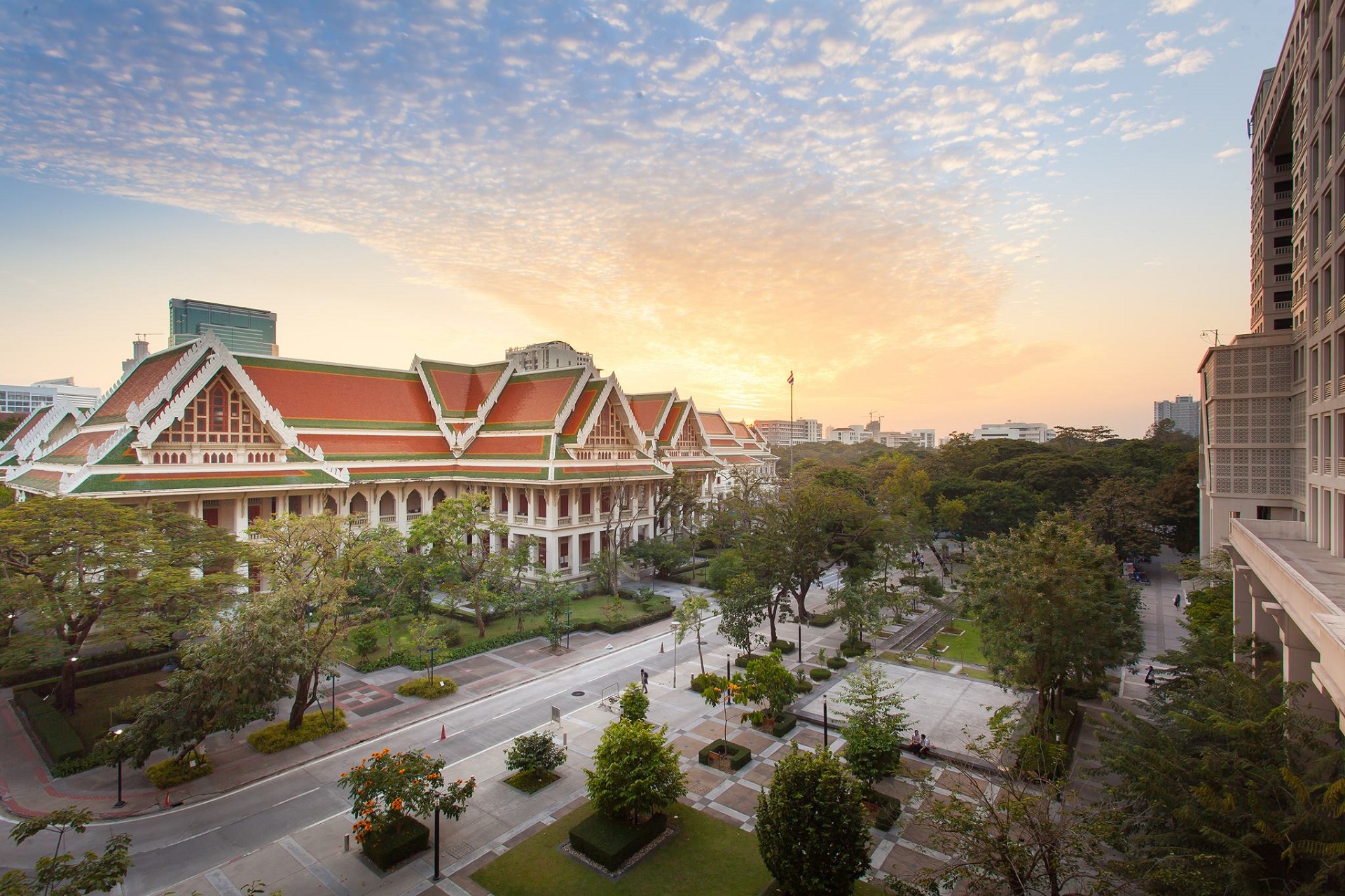My favorite class is Gender and Representation with Dr. Simon Turner,
which is very similar to the subject that I took at the University of Malaya.
14 exchange students from Universiti Malaya (UM), one of the most prestigious universities in Malaysia, visited and participated in the Faculty’s teaching and learning for a total of three weeks. With the support from the ASEAN Center of Chulalongkorn University, the BALAC program and the English Department, they attended many courses, namely, Western Civilization, Selected Study in Cultural Studies IV, Malay I, Malay Conver II, Technology and Culture, Seminar in Special Topics in Literature, Thai Language and Culture, Gender and Cultural Representation, and Literature and Film.
On February 1, 2016, alongside their Thai classmates, these exchange students gave presentations on their cross-cultural perspectives on the AEC and the ASEAN in Room 304, Maha Chakri Sirindhorn Building. Organized by the Malay section and led by Assistant Professor Nureeda Hayiyakoh, Ph.D., and Ajarn Alina Hayeeawae, the presentation was far from ordinary as it incorporated singing and dancing sessions. The atmosphere was jubilant, and the mood was amicable. New friendships were formed, existing friendships strengthened and blossoming — we see rich diversity in a promising unity.
The PR team asked for an interview with a representative of UM exchange students and Nursyamira Binti Shaid, kindly and swiftly responded to our call. Before sharing with our readers the fantastic interview conducted with her, we would like to take this opportunity to thank Nursyamira Binti Shaid for her courtesy and wonderful cooperation. We would also like to thank her friends, all the exchange students, for their enthusiasm, colorful presence and fantastic class participation.
PR Team: Please describe your experience at Chulalongkorn University.
Nursyamira Binti Shaid: It has been a great experience at Chulalongkorn University. The architecture is wonderful as we can see Thai traditional elements in every building. Plus the shady rain trees made the ambience peaceful yet vibrant will all kinds of student activities and events on campus. All classes are well-equipped and the teaching materials are up-to-date. The statues of King Rama V and King Rama VI’s contribute to the historical atmosphere of this oldest university in Thailand.
PR Team: How do you find universities in Thailand? Do you think they are very different from universities in Malaysia?
Nursyamira Binti Shaid: Universities in Thailand are so much different from universities in Malaysia. First, Thai students have to wear uniforms whereas we do not have to wear the uniform at universities in Malaysia. The uniform era ended the moment we left high school. Secondly, the duration of lecture class is different. Here in Thailand, we have to attend a three-hour lecture, while in Malaysia each class session lasts only two hours. At first it was quite difficult for me to adapt with such differences, but as time passed I got used to the ways Thai universities are run. Thirdly, the culture of taking notes here during lecture is different. In Malaysia, it is rude for students to type on their laptops while the lecturer is giving his/her lecture. Malaysian students write down their notes instead. I was surprised to see Thai students use their laptops to take notes.
PR Team: How do you find the courses you have experienced here at the Faculty of Arts? Do you have a favorite? Are there differences or similarities with courses you attend back home?
Nursyamira Binti Shaid: The courses that I took here at the Faculty of Arts are interesting and the lecturers were nice and kind to us. We were warmly welcome throughout the three weeks we visited the Faculty of Arts. My Thai classmates were very responsive. They helped me a lot during group discussions. All Thai students I met spoke good English. Thus, I had no problem in communicating with them. They even helped me with my English. My favorite class is Gender and Cultural Representation with Dr. Simon Turner, which is very similar to the subject that I took at the University of Malaya.
PR Team: What do you think of AEC? Do you think this integration will be a success? What, in your opinion, will be AEC’s challenges and advantages?
Nursyamira Binti Shaid: The ASEAN Economic Community (AEC) is a major turning point of the regional economic integration agenda in the ASEAN. I think the AEC is a good cooperation as it seeks to integrate the diverse economics into one single market. It will be a huge success because each member of the ASEAN communities has its own attractive characteristics which appeal to investors, including favorable demographic profiles, abundant natural resources, low-cost labor and so much more. Ideally, the AEC will help link up the less developed economies with the more developed ones, bringing about a more equitable economic development across the region. The ASEAN as a whole will be better integrated into the global economy.
PR Team: Would you like to come back and visit Chulalongkorn University and explore Thailand? Say a few words to your Thai friends and lecturers.
Nursyamira Binti Shaid: I sure would love that. I would like to thank the Faculty of Arts at Chulalongkorn University for giving me the opportunity to become part of the community for three weeks. I will never forget all the ‘ajarns’, especially Ajarn Nureeda, who were always there for me and also my new friends, who always made us feel like home. Thank you, my Thai friends, for being our tour guides and translators. I look forward to seeing you again and receiving you here in Malaysia.

